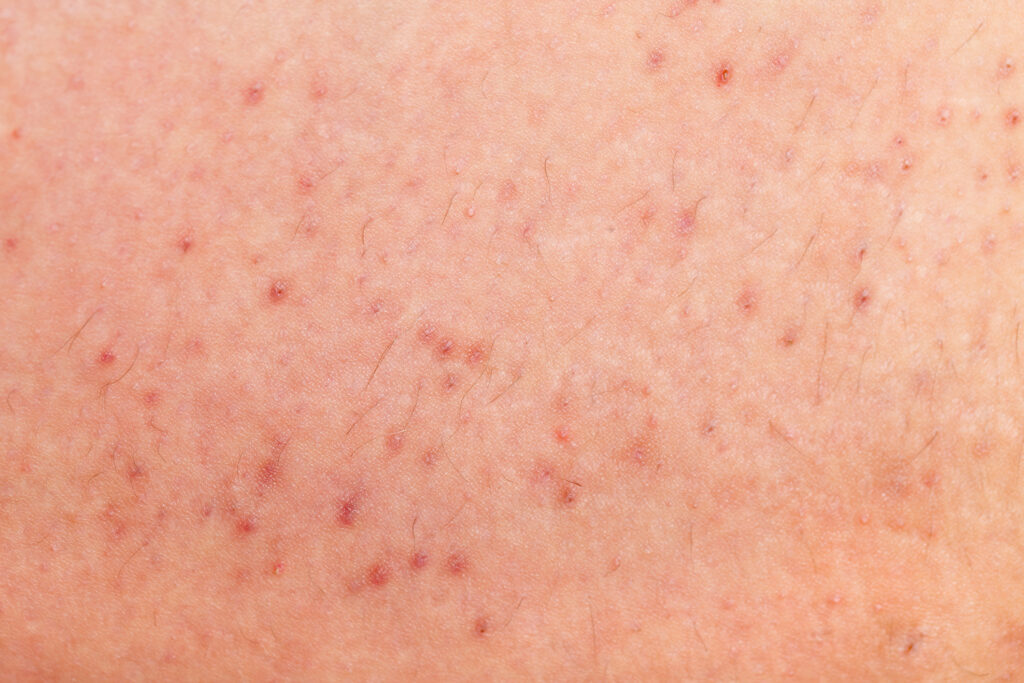Dr. Ted Rosen discusses using dupilumab to treat acquired perforating dermatosis, an unsightly, usually itchy or painful skin condition for which surefire interventions are lacking.
Dupilumab for Acquired Perforating Dermatosis
By Ted Rosen, MD, FAAD
Editor-in-Chief
Acquired perforating dermatosis is an umbrella term used to describe a variety of disorders that are characterized by trans-epidermal elimination of dermal connective tissue. Within this grouping are included reactive perforating collagenosis, elastosis perforans serpiginosa, and perforating folliculitis.
The precise pathogenesis of these disorders is not known but has been theorized to relate to chronic scratching, reduced blood supply, and overexpression of TGF-ß and fibronectin.
Almost all cases of acquired perforating dermatosis are associated with an underlying medical problem, most prominently diabetes mellitus, chronic kidney disease, hepatic disease, hypothyroidism, and HIV infection.
The treatment of acquired perforating dermatosis has traditionally been very difficult. Topical corticosteroids and keratolytics, combined with oral antihistamines, are most often utilized with quite variable success. Other potential treatment modalities include systemic and intralesional steroids, topical and systemic retinoids, doxycycline, narrow band UVB therapy, and allopurinol. None of the aforementioned interventions is surefire therapy.
Because acquired perforating dermatosis lesions are both unsightly and usually itchy or painful, a reliable therapy is desirable.
Although a solitary case report is certainly minimal evidence, an impressive case of extensive acquired perforating dermatosis associated with liver disorder (Wilson’s Disease) is reported with excellent response to dupilumab.1 In this case, severe pruritus was interfering with activities of daily life as well as with normal sleep patterns. Pruritic lesions consisted of hyperpigmented, umbilicated, and frequently excoriated papules, typical of acquired perforating dermatosis. A punch biopsy confirmed the histologic diagnosis of reactive perforating collagenosis.
The patient received dupilumab in a standard manner (600 mg loading dose, followed by 300 mg every 2 weeks). Itching resolved in 2 weeks, and active skin lesions disappeared by 10 weeks of therapy.
It is hypothesized that dupilumab treatment may ameliorate acquired perforating dermatosis due to its inactivation of interleukin-4 (IL-4) and IL-13, both of which facilitate itch-sensory neurons. IL-4 also promotes neuronal hypersensitivity to other pruritogenic factors, such as histamine and IL-31.
Dupilumab is a fully human monoclonal antibody that binds to the IL-4a, a shared receptor for IL-4 and IL-13. Although much more work needs to be done, for a refractory case of acquired perforating dermatosis it seems reasonable to perform a clinical trial of dupilumab.
Reference:
Alsebayel MM, Alzaid T, Alobaida SA. Dupilumab in acquired perforating dermatosis: A potential new treatment. JAAD Case Rep. 2022 Aug 11;28:34-36. doi: 10.1016/j.jdcr.2022.08.013. PMID: 36097624; PMCID: PMC9463549.


